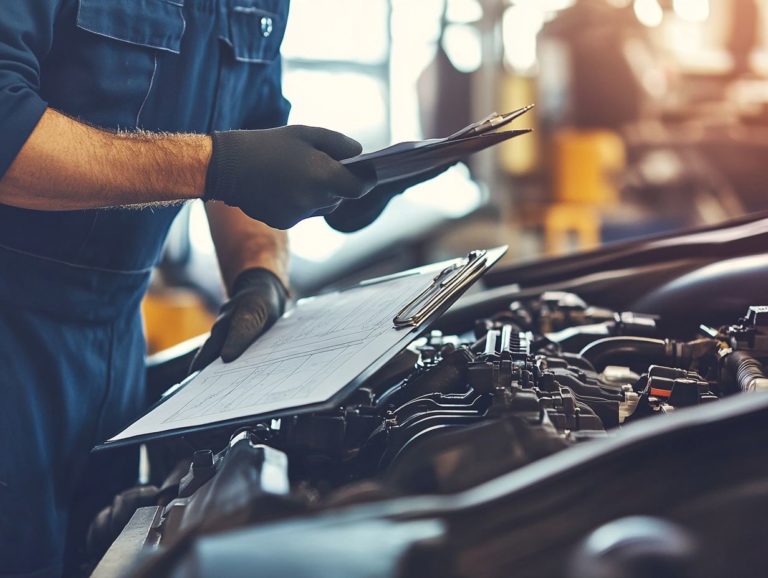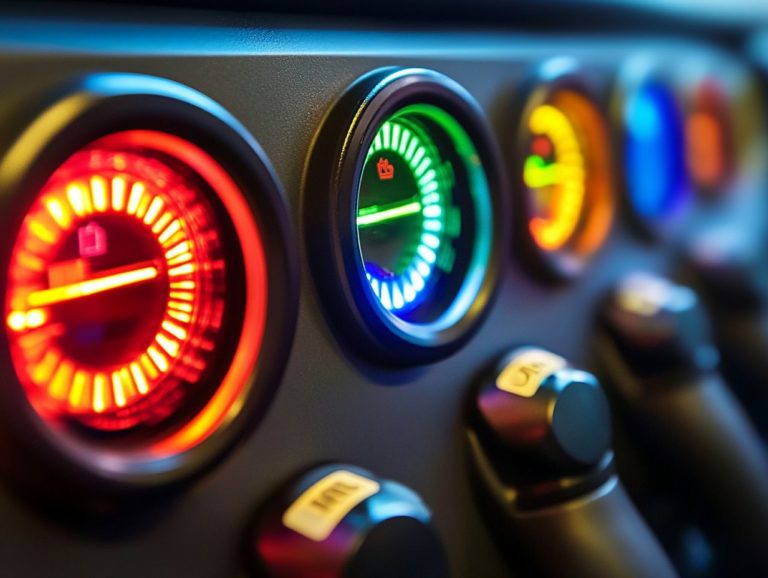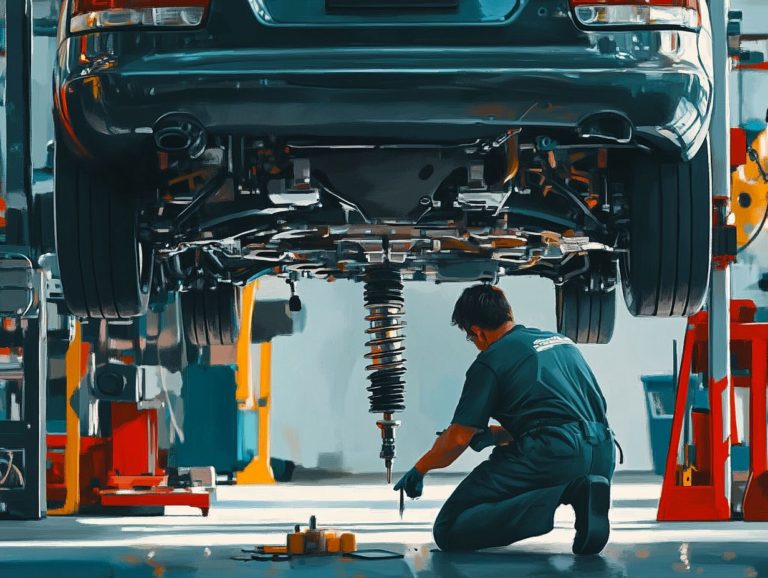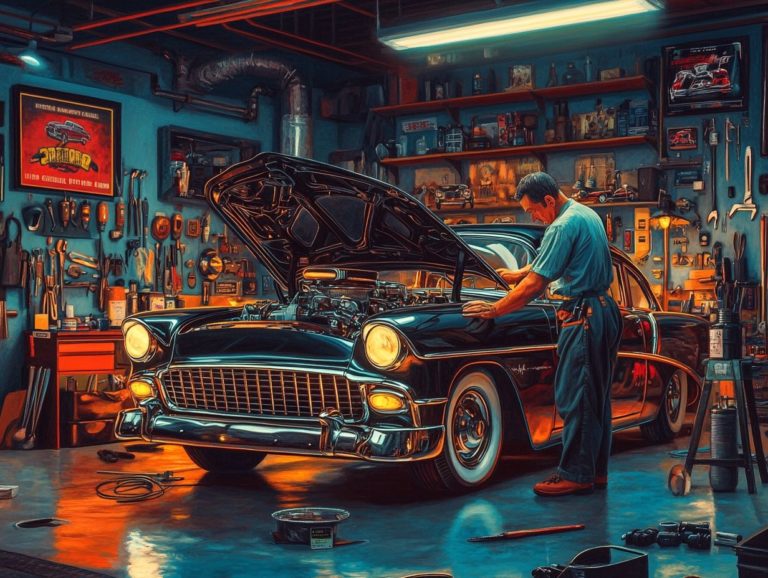How to Handle Car Maintenance in a Lease
Leasing a car provides you with flexibility and often more manageable monthly payments. However, it also entails certain responsibilities, particularly in terms of maintenance.
Understanding the details of car lease agreements and recognizing the importance of keeping your vehicle in optimal condition is essential to sidestepping any unexpected charges.
This guide will walk you through key terms and conditions, highlight necessary maintenance tasks, and offer practical tips to ensure your leased car remains in excellent shape throughout your lease term.
Step into your leasing journey with confidence and excitement!
Contents
- Key Takeaways:
- Understanding Car Lease Agreements
- Importance of Car Maintenance in a Lease
- Regular Maintenance Tasks
- Handling Repairs in a Lease
- Tips for Keeping Your Leased Car in Good Condition
- Frequently Asked Questions
- Can I handle car maintenance on my own if I have a leased vehicle?
- What are my responsibilities for car maintenance in a lease?
- Do I have to take my leased car to a specific dealership for maintenance?
- What happens if I don’t properly maintain my leased car?
- Can I purchase additional maintenance coverage for my leased car?
- What happens if I exceed the mileage limit on my leased car due to maintenance appointments?
Key Takeaways:
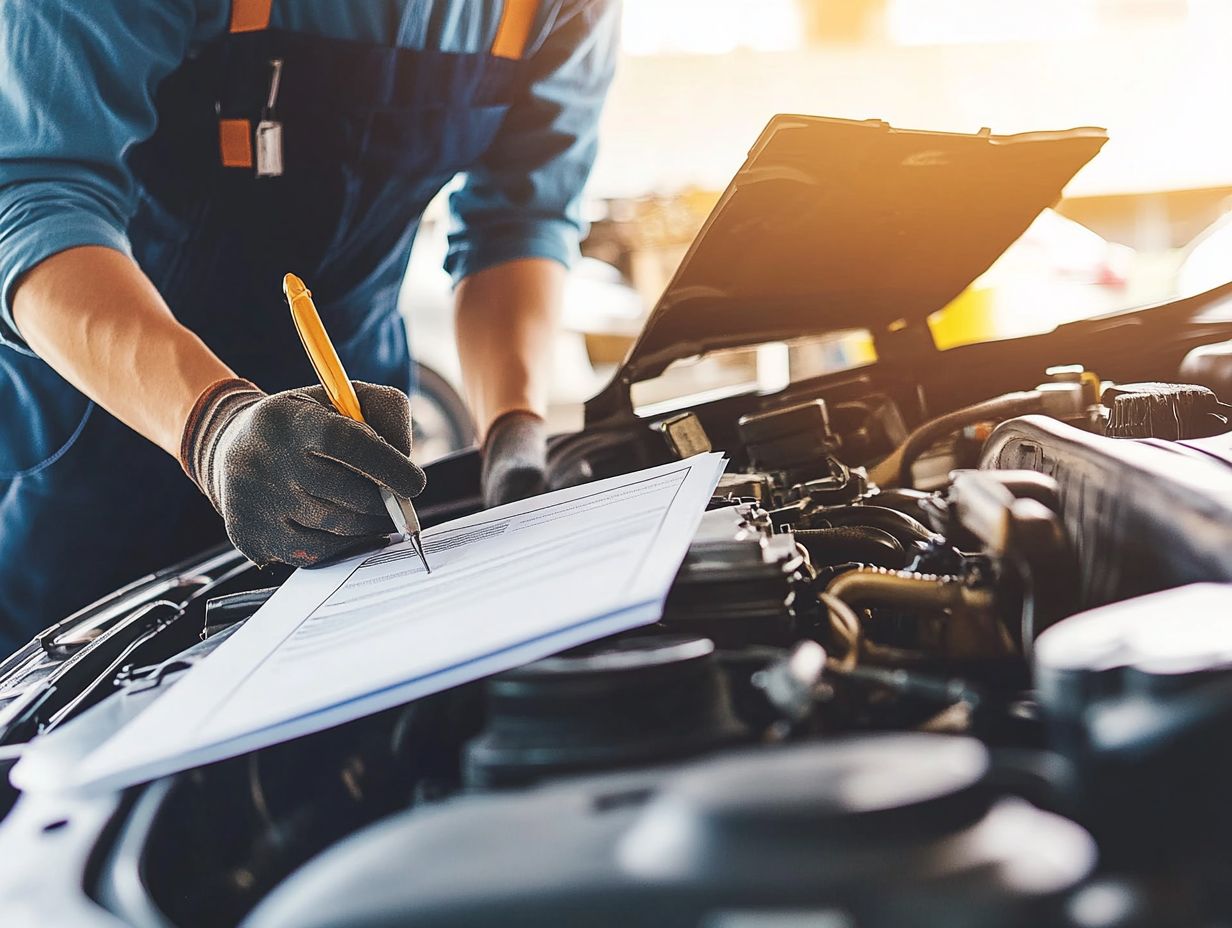
- Understand the key terms and conditions of your car lease agreement to avoid any surprises or additional expenses.
- Keep up with regular maintenance tasks to prevent excess wear and tear charges and maintain the value of your leased car.
- Be prepared for repairs and accidents by knowing your options and understanding your lease agreement.
Understanding Car Lease Agreements
Understanding car lease agreements is crucial for anyone considering a leasing arrangement, especially in the United States.
A lease agreement typically details the terms and conditions of the leasing process, including expectations regarding vehicle condition, mileage limits, and your responsibilities as the lessee (the person who leases the car). This knowledge is essential to help you avoid unexpected repair costs and ensure a seamless leasing experience with reputable companies.
Key Terms and Conditions
Key terms and conditions in a lease agreement are important for grasping your financial responsibilities during the lease period, especially concerning excess and normal wear on the vehicle.
Details like depreciation rates (how much value the vehicle will lose over time) directly influence any potential charges at the end of the lease. Maintenance responsibilities are typically outlined, clarifying whether regular servicing falls on you or the leasing company.
The stipulations regarding vehicle condition can determine what is considered acceptable wear and tear versus damage that might incur additional fees. By understanding these nuances, you empower yourself to make informed decisions, ensuring you stay within the established guidelines and avoid unexpected costs.
Importance of Car Maintenance in a Lease
The significance of car maintenance during a lease cannot be overstated. By prioritizing regular maintenance, you can significantly reduce both maintenance and repair costs. Additionally, knowing how to handle post-lease issues with your car ensures that your vehicle remains in optimal condition throughout the lease period.
This proactive approach not only enhances the car’s performance but also gives you peace of mind as a lessee, knowing that you re taking the best care of your investment.
Preventing Excess Wear and Tear Charges
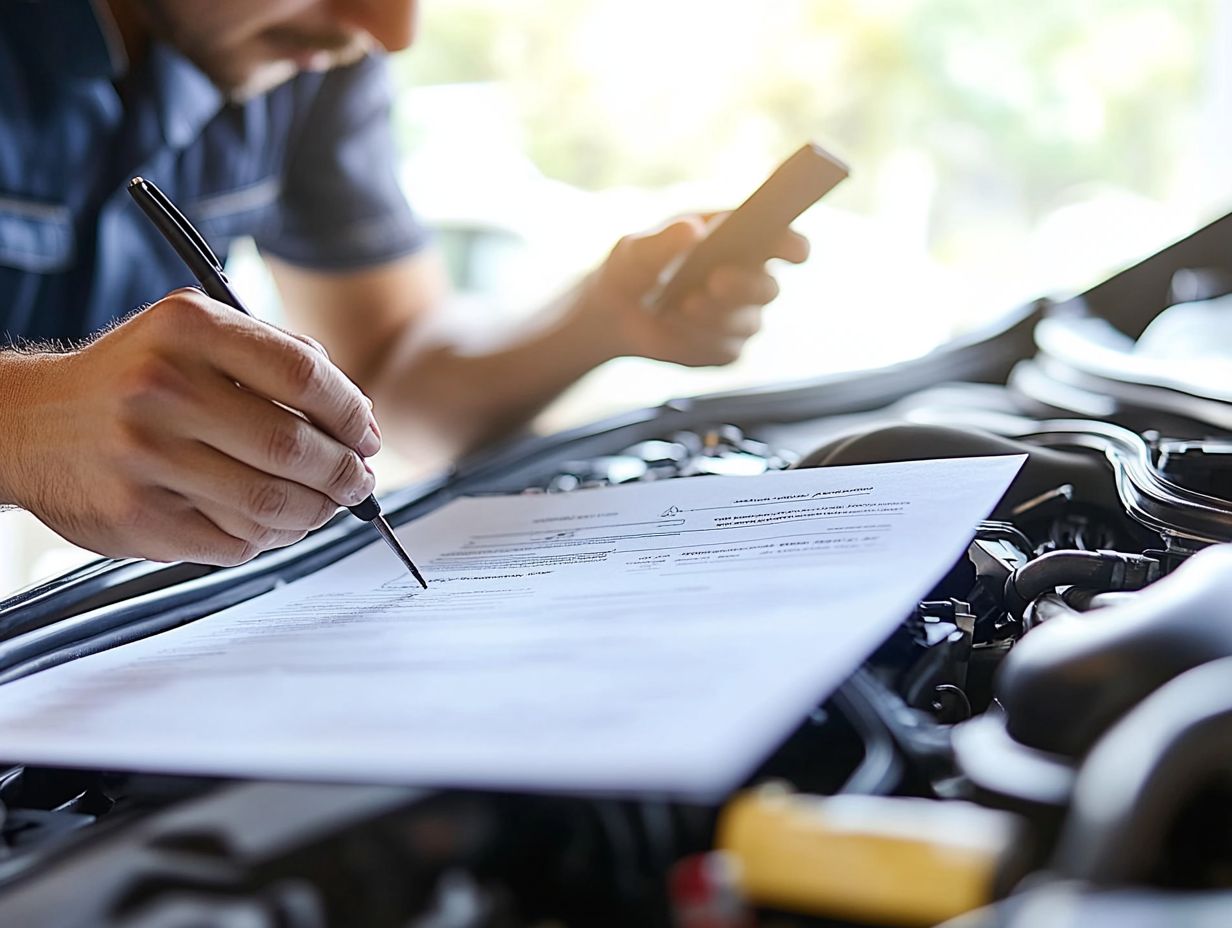
Preventing excess wear and tear charges is essential for anyone leasing a vehicle, as dealership policies often outline what s considered acceptable normal wear throughout the lease term.
Regular inspections are key to keeping your vehicle in prime condition. They allow you to spot potential issues before they escalate into expensive repairs. Maintaining a comprehensive service history not only helps you adhere to dealership guidelines but can also bolster your vehicle s resale value down the line.
By understanding dealership policies on wear and tear, you empower yourself to make informed decisions regarding your daily usage and maintenance practices, steering clear of unnecessary charges when your lease ends. Simple actions like routine cleaning, promptly addressing minor repairs, and practicing safe driving can significantly enhance your vehicle s overall condition.
Regular Maintenance Tasks
Regular maintenance tasks like oil changes and tire replacements are crucial for your leased vehicle. These essential components of scheduled maintenance not only help you meet the requirements but also ensure that you uphold your automotive warranty.
Taking care of these tasks keeps your vehicle running smoothly and protects your investment.
Oil Changes, Tire Rotations, and More
Key maintenance tasks, like oil changes and tire rotations, are crucial for enhancing your vehicle’s performance and managing maintenance costs throughout your lease.
These essential services should be performed regularly, typically every 3,000 to 7,500 miles for oil changes, depending on your vehicle type and usage. Tire rotations are generally recommended every 6,000 to 8,000 miles to ensure even wear and extend the life of your tires.
By keeping up with these tasks, you can avoid headaches from more expensive repairs later, such as engine troubles or premature tire replacements. Stay proactive by understanding the costs tied to these services, which allows you to budget effectively, maintain your vehicle in optimal condition, and preserve its resale value.
Handling Repairs in a Lease
Navigating repairs in a lease can feel overwhelming, especially when unexpected issues arise. By understanding the potential repair costs and knowing your insurance coverage, you can streamline this process and alleviate some of the stress that comes with leasing.
Dealing with Accidents and Major Repairs
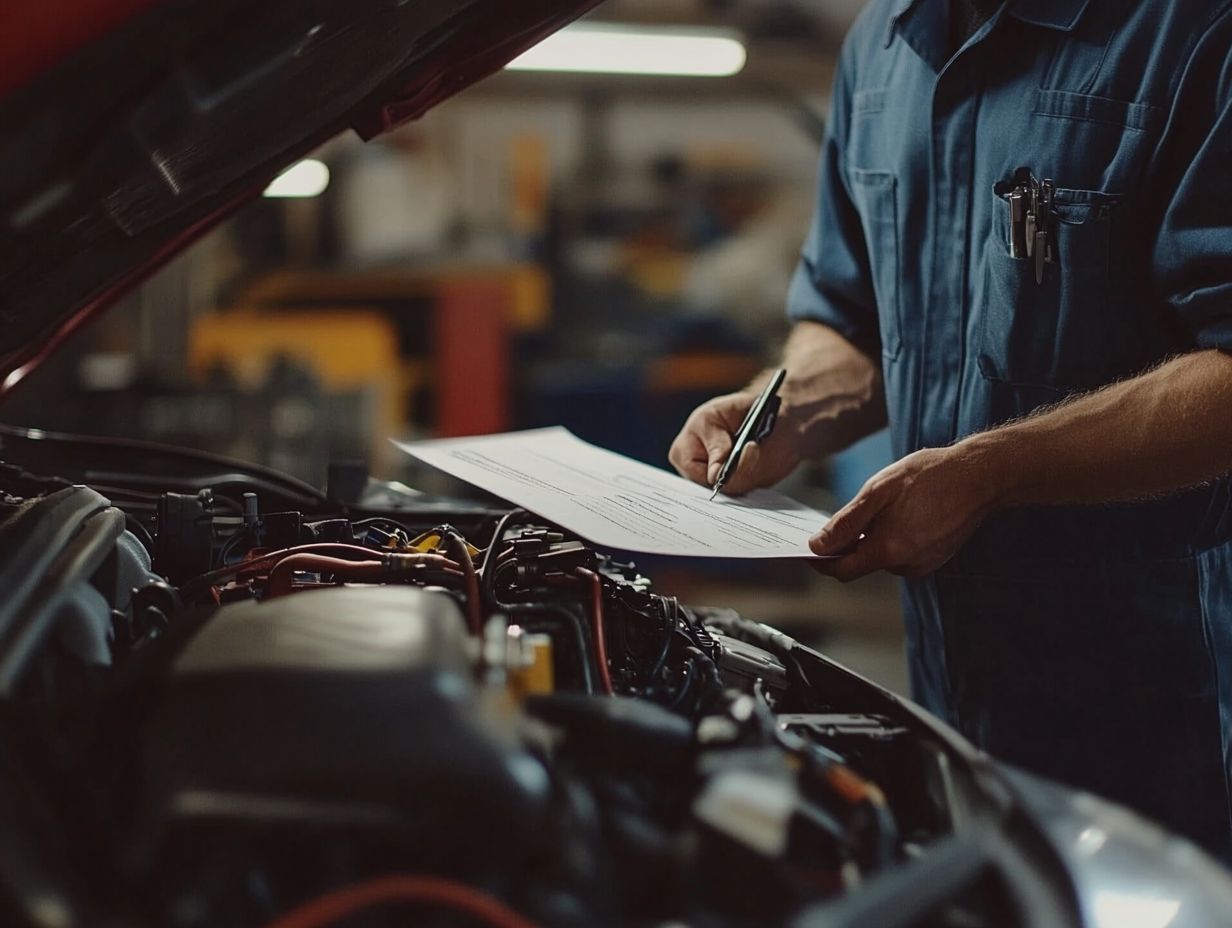
Dealing with accidents and significant repairs for your leased vehicle requires careful attention, especially in documenting the repair process and filing insurance claims to ensure all necessary repairs are covered.
Once you’ve ensured everyone’s safety and reported the incident, the next step is gathering evidence. Capture clear photographs of the damage, obtain a copy of the police report, and collect witness statements to strengthen your claims to the insurance provider.
For repairs, keeping thorough records of all invoices and estimates is essential. Note the services performed and parts replaced. Adhering to your lease agreement is crucial; many leases require repairs at authorized dealerships to maintain warranty coverage.
Regular communication with the repair shop and the insurance company will further streamline the process, ensuring your claims are processed efficiently and your vehicle is restored to its original condition.
Tips for Keeping Your Leased Car in Good Condition
Maintaining your leased car in excellent condition involves a few key practices. Focus on keeping it clean and free from damage to preserve its integrity and protect yourself from potential charges at the end of the lease.
Maintaining Cleanliness and Avoiding Damage
Maintaining cleanliness and preventing damage are essential responsibilities for you as a lessee. They significantly influence the overall condition of the vehicle and can reduce costs at lease termination.
To keep both the interior and exterior of your vehicle in top-notch condition, adopt effective strategies. Regular cleaning, such as weekly vacuuming and monthly waxing, not only enhances the car’s aesthetic appeal but also protects its surfaces from wear and tear. Using protective measures like floor mats and seat covers can guard against spills and stains.
Understanding the responsibilities in your lease agreement is equally important, as they typically specify necessary maintenance routines and acceptable levels of wear. By taking a proactive approach, you can ensure a smooth leasing experience and avoid unexpected charges when the lease term ends.
Frequently Asked Questions
Can I handle car maintenance on my own if I have a leased vehicle?
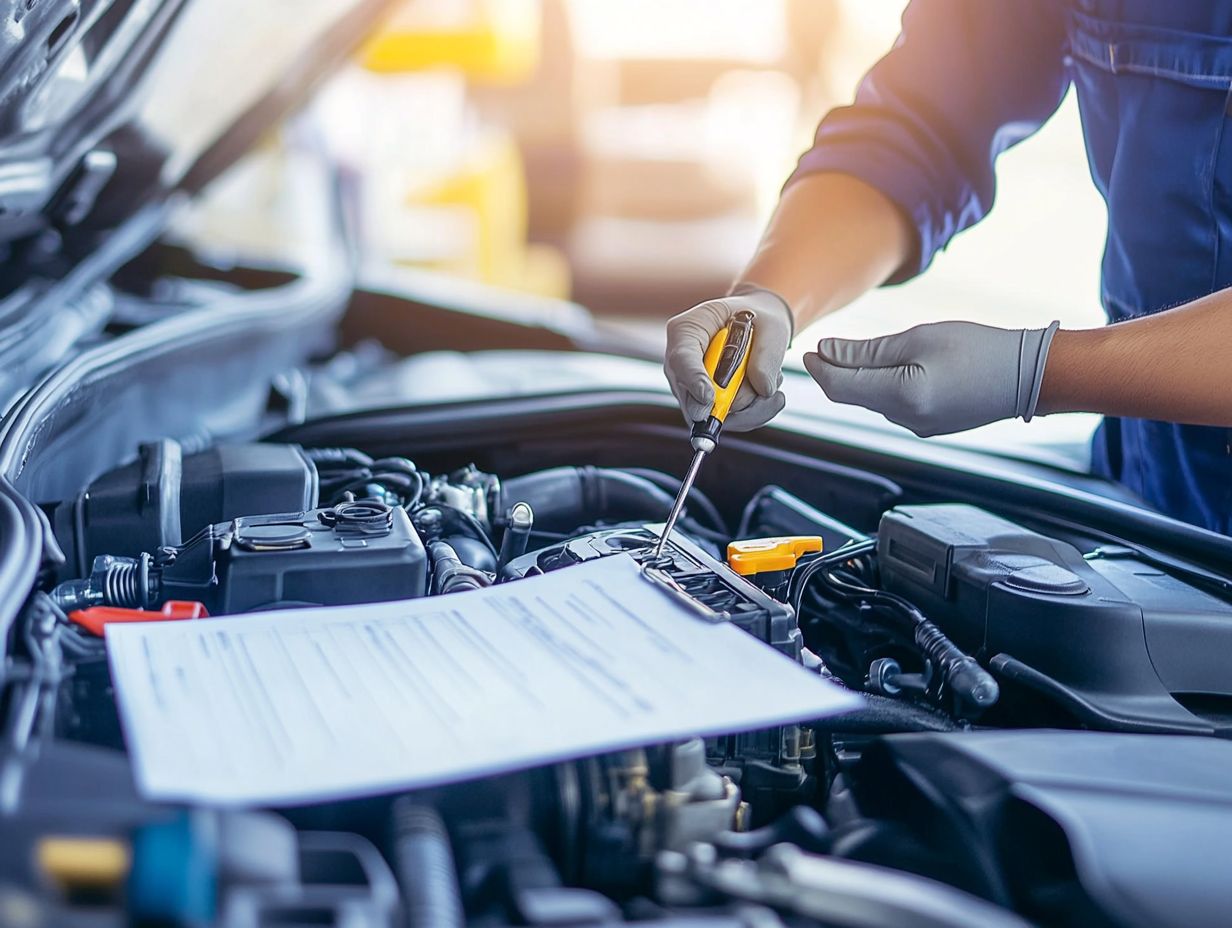
Yes, you can handle car maintenance on your own if you have a leased vehicle. However, make sure to follow the maintenance guidelines outlined in your lease agreement.
What are my responsibilities for car maintenance in a lease?
Your responsibilities for car maintenance in a lease are clearly outlined in your lease agreement. Generally, you are responsible for routine maintenance and repairs not covered under your warranty.
Take Action: Don’t wait schedule your next maintenance today and ensure your leased vehicle stays in great shape!
Do I have to take my leased car to a specific dealership for maintenance?
Your lease agreement dictates your options. Some leases require you to visit a specific dealership, while others let you go to any certified mechanic.
What happens if I don’t properly maintain my leased car?
Failing to maintain your leased car can lead to extra charges when you return it. Following your lease’s maintenance guidelines is crucial to avoid these costs.
Can I purchase additional maintenance coverage for my leased car?
Yes, you can buy extra maintenance coverage. Check with your dealership or a third-party company. Read the terms carefully and weigh the costs before making a decision.
What happens if I exceed the mileage limit on my leased car due to maintenance appointments?
If maintenance pushes you over the mileage limit, you might negotiate with the leasing company to waive those fees. Keep good records of your maintenance visits to support your request.

